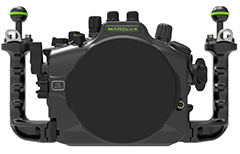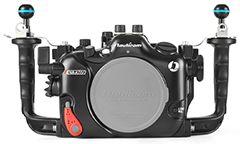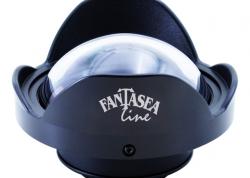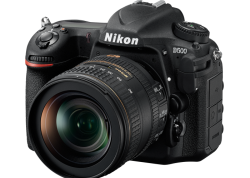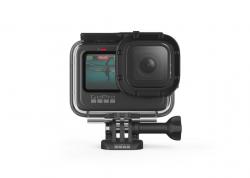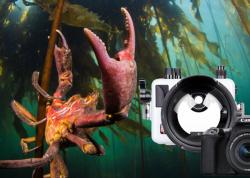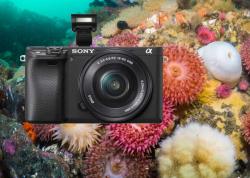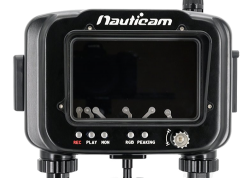Sony A7 IV Review
High-end cameras like the Sony A1, Canon EOS R3, and Nikon Z9 may have been stealing the show as of late, but rarely do people discuss the obvious - at over $6,000 for just the body, these cameras are unaffordable. And as supply chain issues restrict the middle-tier and lower-end camera markets, the release of the new Sony A7 IV is a breath of fresh air. This new photo-video hybrid full-frame mirrorless camera offers an incredible set of features for a much more reasonable price than popular underwater cameras like the Canon EOS R5 or the Sony A1. It is even more encouraging that there are already many reasonably priced Sony A7 IV housing options available - when it usually takes most manufacturers a few months to design a housing after the release of a camera.
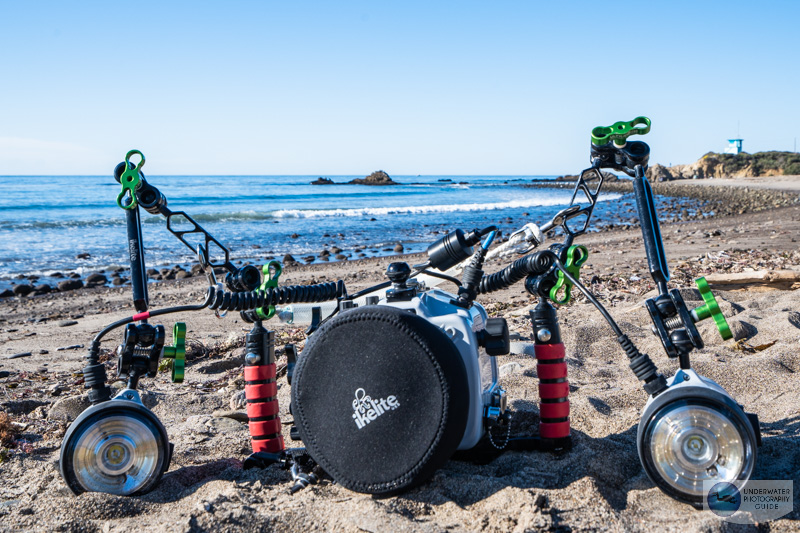
The Sony A7 IV features a well-rounded 33 megapixel, full frame CMOS sensor, and 4K/60p video recording capability. Combined with Sony's world-class autofocus tracking system, this camera was starting to look like the perfect tool for my upcoming underwater photo and video workshop in Socorro, Mexico. I called up John at Ikelite and within a week, a prototype Ikelite A7 IV housing was sitting on my doorstep. After a quick flight to Cabo and a 30 hour crossing aboard the Rocio Del Marl Liveaboard, I put this camera through the wringer.... Am I sold? Yes. The Canon EOS R5 might be my favorite underwater camera, but for a more reasonable budget, I'm eyeing the A7 IV. Here's why....
Sony A7 IV Availability: Available Now at Bluewater Photo
Sony A7 IV US MSRP: $2,500
Just got your Sony A7 IV? Check out the Bluewater Photo's best underwater settings for the A7 IV.
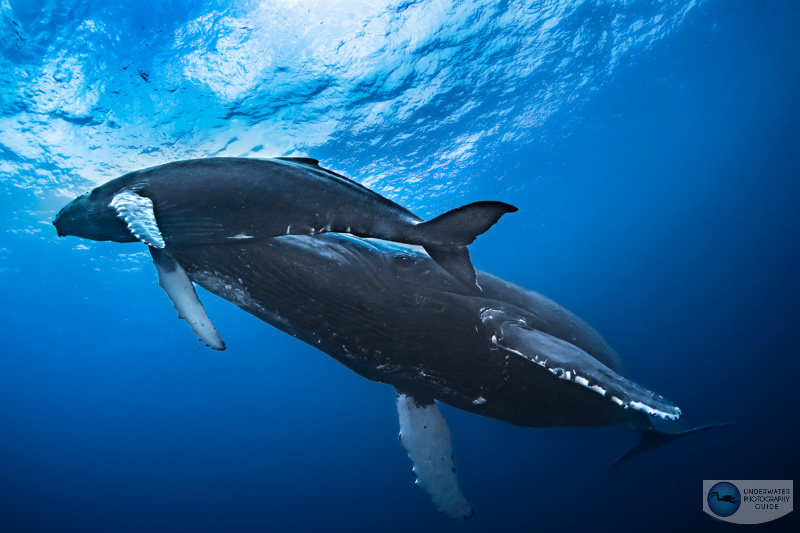
Support our content and get your Sony A7 IV camera body and underwater housings at Bluewater Photo!
Ikelite Sony A7 IV Underwater Housing
Isotta Sony A7 IV Underwater Housing
Nauticam Sony A7 IV Underwater Housing
Aquatica Sony A7 IV Underwater Housing
Sea & Sea Sony A7 IV Underwater Housing
Marelux Sony A7 IV Underwater Housing
Sony A7 IV Underwater Housing Guide
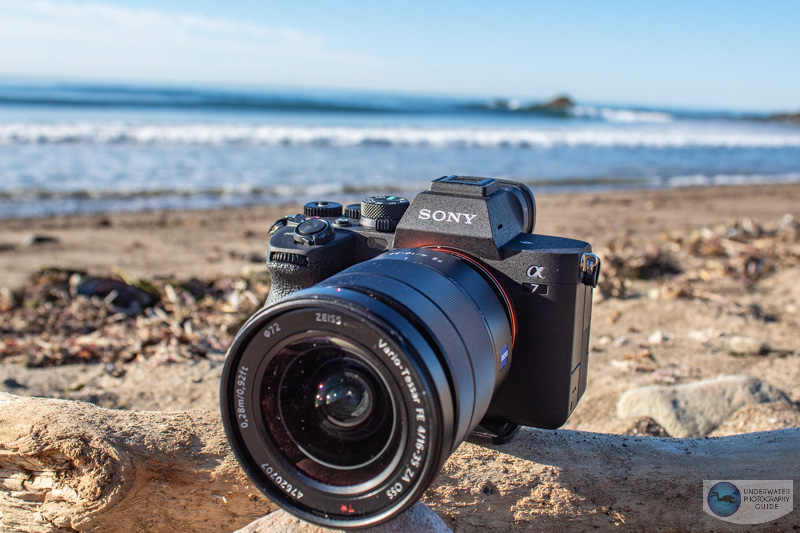
Sony A7 IV Specifications
- 33 megapixel, full frame CMOS sensor
- ISO Range: 100-51,200; "dual gain" ISO functionality with the second native ISO at 3200
- 10 fps burst shooting
- 828 RAW buffer
- 4K/60P, 10-bit 4:2:2 internal recording
- 4k/60p recording in APS-C crop mode - all other recording formats can be done with the full width of the sensor
- S-Cinetone, Cine, S-Log2, S-Log3, and HLG log picture profiles
- One SD UHS-II card slot and one CFexpress Type A card slot
- Low light AF down to EV -4
- AF tracking with Animal eye AF
- 759 phase detect autofocus points
- 3.7 million dot EVF (electronic viewfinder)
- 1/250s flash sync speed and 1/320 flash sync speed in APS-C mode
- 5 axis in-body image stabilization (IBIS)
- 580 shot battery life
- Size: 131.3 mm, 96.4 mm, 79.8 mm
- Weight: 658 g (1lb 7.3 oz)
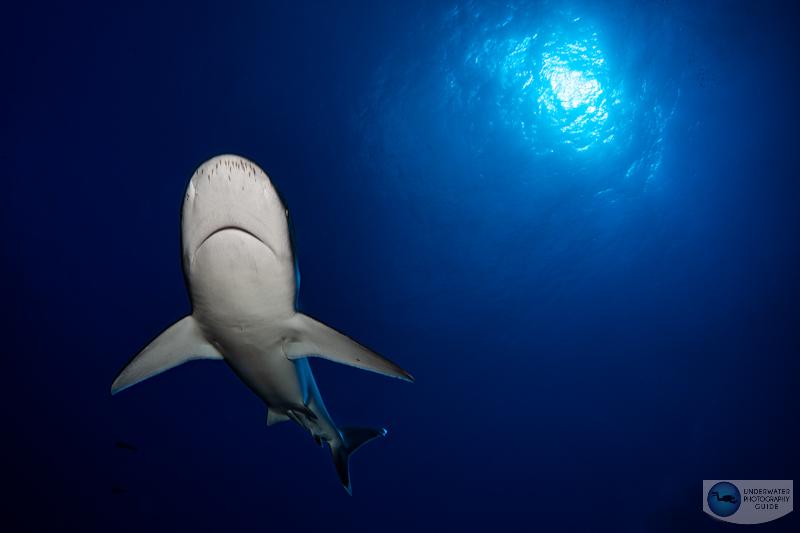
Sony A7 IV vs Nikon Z 6II vs Canon EOS R6
For Photography
The Sony A7 IV is in the same class of full frame camera as the Nikon Z 6II and the Canon EOS R6. In many ways, each of these cameras are very similar. However, the Sony A7 IV stands out as the best option for photography due to its higher resolution, 33 MP sensor. The Canon EOS R6's sensor is "only" 20MP which can be a serious disadvantage for macro shooters. The Nikon Z 6II, on the other hand, has a 24.5 megapixel sensor and a lower price point - making it a more competitive camera when compared to the Sony A7 IV.
When it comes to autofocus performance, I find that both the Sony A7 IV and Canon EOS R6 are equitable and perform much better than the Nikon Z 6II. The autofocus tracking systems are very accurate in both the Sony and Canon cameras with little distinction between the two. However, I did notice that the Canon EOS R6 handles autofocus in lowlight just a tad bit better than the Sony A7 IV. If you dive in darker water, the obvious solution is to get a focus light. But for those subjects that are too skittish for a focus light, the Canon EOS R6 is a better choice in camera.
The winner for photography? The Sony A7 IV
For Video
When you compare these three cameras for video, things start to get a little tricky. Off the bat, the Sony A7 IV has the most picture profile and codec options for filming. So if you're a colorist or into video editing, the Sony A7 IV is the clear winner.
All three cameras shoot 4K/60p video, which is an ideal resolution and frame rate for underwater video. However, the method of recording varies from camera to camera. The Canon EOS R6 has a 1.05X crop at 4K/60p which is not very noticeable. However, both the Nikon Z6 II and Canon EOS R6 have a 1.5X (APS-C) crop at 4K/60p. This causes a degradation in image quality as well as a change in the field of view of the video. In some cases, it can be a benefit if you need to get close to your subjects while filming.
The winner for video? The Canon EOS R6 if image quality is your priority, and the Sony A7 IV if editing is your priority. Sorry Nikon.
All in all, the Sony A7 IV is a slightly better choice compared to the Canon EOS R6, but in a higher class of camera compared to the Nikon Z 6II. If you're looking for a great deal on a camera, the Nikon Z 6II could make a potentially better option.
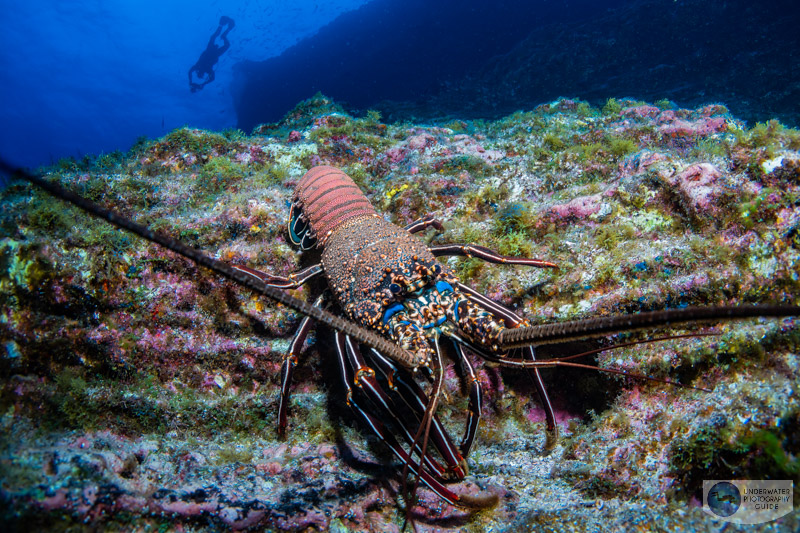
Sony A7 IV vs Sony A7 III
The Sony A7 IV is technically an upgrade from the Sony A7 III. However, it's not a direct upgrade. Between the two cameras there's the release of the Sony A7R IV, Sony A9 II, Sony A7S III, and Sony A1. With each iteration, Sony packs more and more features into their cameras. So it's more than just an upgrade - it's a completely different camera. Even though you can find the Sony A7 III for $2000, the A7 IV is a no brainer and well worth the extra expense. You get a better autofocus system, better menu, better colors in your files, much better video features, better white balance, better everything. If you're still looking for a better value camera, the Sony A7C would be a better consideration.
Sony A7 IV Key Features
Build, Ergonomics, and Battery Life
Ergonomically, the Sony A7 IV is, in my opinion, the best Sony camera ever designed. While the look and feel is very similar to other Sony full frame cameras, two key changes make your underwater workflow more streamlined. The first is that the mode dial has been updated so that there is a dedicated photo, video, S&Q switch. This means that instead of spinning the mode dial to reach your video settings, you just use the switch. If the mode dial is on manual mode in photo mode, a change of the switch will keep you on manual mode but in video mode. The second is that there are now two control dials on the top right, rear of the camera, one in the front right, and one on the d-pad. This makes assigning dials for your triangle of exposure a breeze. I love that I can have my aperture and shutter speed right next to eachother on the top of the camera. Depending on your housing design, this can translate to closer housing controls that will help your reaction time to quick subjects underwater.
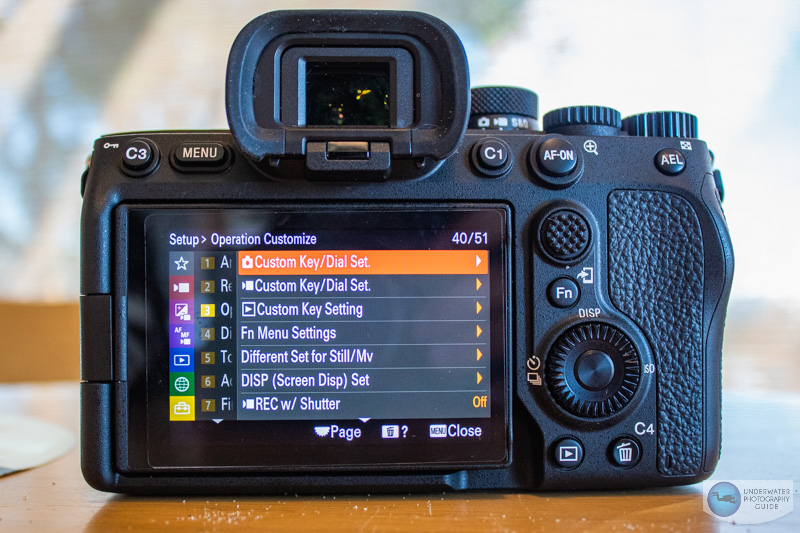
Along with the standard plethora of customizable buttons, the A7 IV is equipped with the new Sony menu that was debuted on the Sony A7S III. While there are a large number of menu options, it is much better organized with understandable labels as compared to the Sony A7III.
Rated for 580 shots, the battery life on the camera is excellent. To be honest, I was so confident that the battery would last a day of diving, I rarely checked how low the battery actually got. I usually ended up on 30% battery life after four dives, but it was also as high as 70% some days. I did not need to bring a spare battery on the trip. When I shot video for the whole day, the battery did drain a bit quicker, but it was still more than enough for a day of shooting.
33 Megapixel Sensor, Image Quality, and "Dual Gain" ISO
33 megapixels is an excellent resolution for a middle-of-the-road full frame camera. It's enough resolution for macro shooters to crop in as they desire, but not too much that it overloads your memory cards and hard drives. I had high hopes for this new CMOS sensor - especially after the stellar performance of the Sony A1 and the Sony A7S III. Did it meet my expectations? Yes and no....
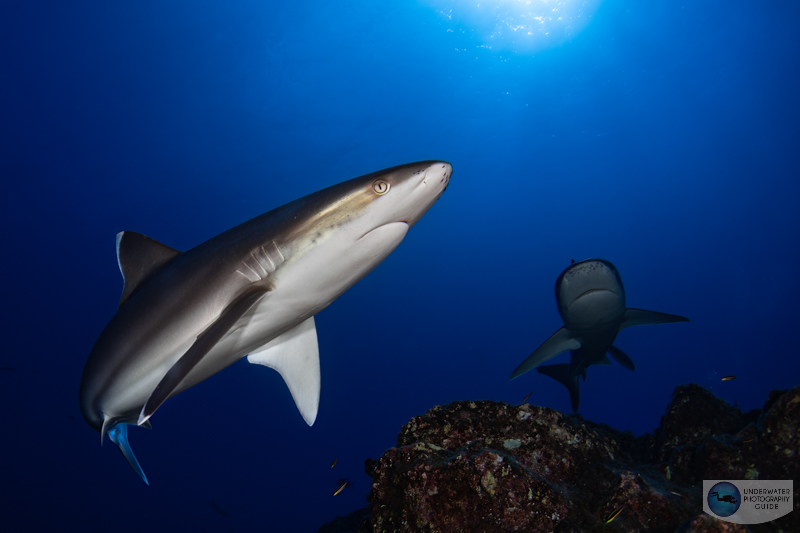
Excellent Overall Image Quality
The A7 IV does produce excellent overall image quality. It captures situations with high dynamic range very well, and it's very easy to pull details from the shadows and highlights of an image. The camera produces surprisingly little noise at high ISOs despite the relatively high resolution sensor - much like the Sony A1. And most importantly, I finally feel that with the A7 IV, Sony has created a camera that produces excellent files for editing - files that rival Nikon. It's very easy to pull colors out in post production. I hardly had to adjust the white balance or touch my vibrance tool. The blues in all my images were nice and deep and the camera captured colors more accurately underwater than what I saw to be the true color. For instance - I was able to pull blacks from my humpbacks that I didn't think possible underwater - usually, the skin is a washed out gray. This might have to do with the fact that I was using a new Ikelite DS 230 strobe which has a very high quality beam, but I do believe the camera goes a step further in producing accurate neutral tones.
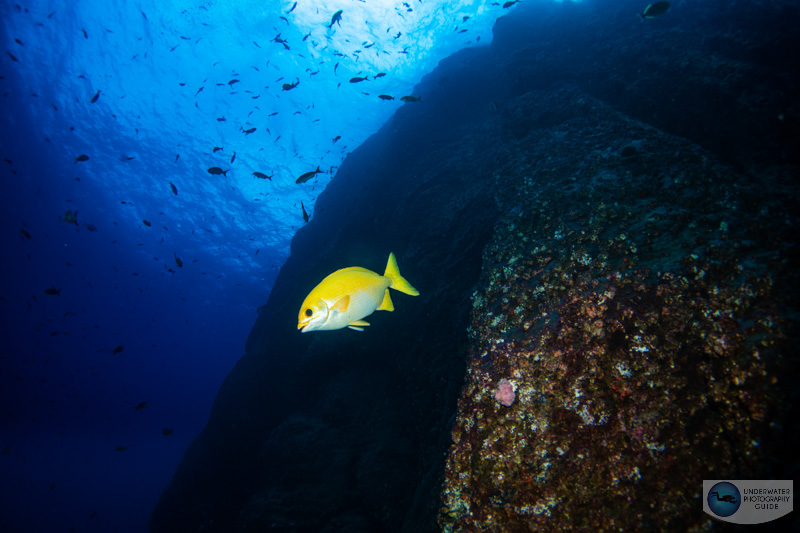
The Banding Issue
My one complaint about the image quality from the Sony A7 IV comes from an interesting phenomenon I've noticed when shooting in very low light situations into blue water without a solid background. When I tried to recover my shadows on underexposed shots, I noticed fairly apparent banding in the shadows. A similar phenomenon made headlines when the Nikon Z6 & Z7 came out, but I have yet to see other photographers complain about this. It didn't happen often, so I do believe that for most photographers, it's a minor issue. But if you do underexpose your photos, be aware that they may be a little difficult to recover in flat situations with low dynamic range and detail.
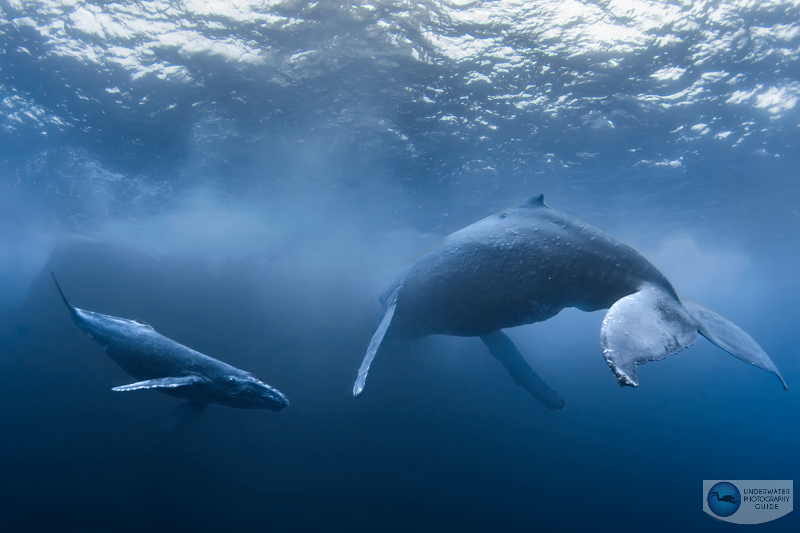
"Dual Gain" ISO
As with the Sony A1 and A7S III, the Sony A7 IV uses an algorithm to emulate "dual gain" functionality in the camera. This means that there are essentially two base ISOs. One at 100 and one at 3200. This is an especially huge advantage for video shooters. If you need to shoot at higher ISOs, it's better to start at 3200 than to be slightly lower than 3200. As I said before, I'm impressed with how clean the photos are - even if you have to recover something seriously underexposed.
Autofocus Performance
As can be expected from Sony, the autofocus on the Sony A7 IV is second to none. I shot in autofocus continuous mode for almost the whole trip, using the autofocus tracking capability of the camera. The camera consistently hit the eye of my targets, and I don't recall an out of focus photo that wasn't caused by user error. The autofocus on the A7 IV is comparable to what can be found on the Sony A1 and Canon EOS R6. However, the Canon EOS R6 does a better job at finding animal eyes with the animal eye autofocus tracking mode. I also noticed that the A7 IV could handle most low light situations, but in very dark, deep water, it struggled to lock on focus unless I was close to a subject. That being said, I did the whole trip without a focus light, so the A7 IV performs excellently in most situations.
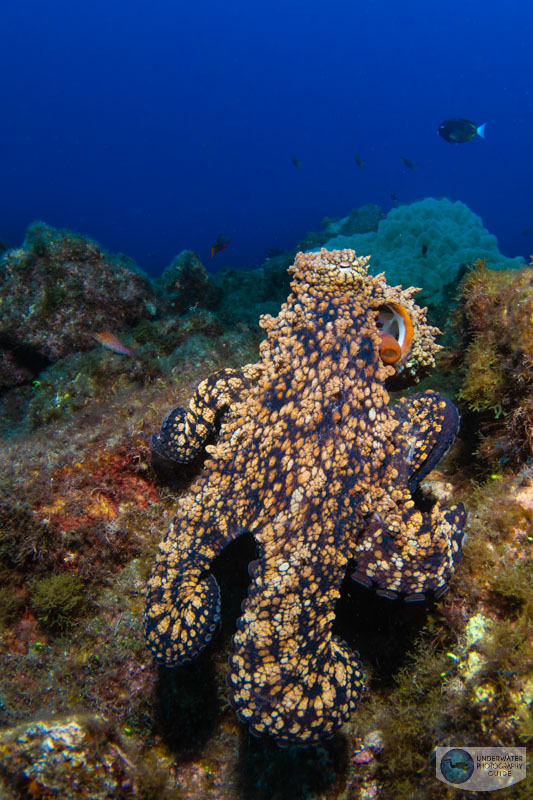
Video Features
The Sony A7 IV is an ideal camera for underwater video, in most respects. It is capable of recording 4K video up to 60 fps. However, this video is in APS-C mode and has a 1.5x crop. That means the video won't be quite as sharp as if the camera was using the full width of the sensor and the field of view of your lens changes when shooting at this resolution. Now, one fix is to shoot in 1080/60p. But with modern video, I believe 4K/60p is the best frame rate and resolution to shoot underwater - especially because you can slow down the footage for stabilization. So throughout the trip, I decided to put up with the APS-C crop and in many cases, it actually helped my video because I didn't have to get as close to my subjects. That being said, there were times that I wished I was closer to subjects to get more light and detail from my video lights.
The most exciting video features that come with the Sony A7 IV are the features built in for video editing. Along with 10-bit 4:2:2 color sampling, the A7 IV is equipped with a wide variety of Logarithmic profiles including HLG, S-Log2, S-Log3, S-Cinetone, etc. I prefer shooting in S-Log3 so I can get the most detail out of my shadows and highlights. The A7 IV also has a wide range of codecs, including all-intra compression for the most detail for video editing. Having recently gotten into color editing, I was quite happy with the color science of the files and the amount of detail I could pull from the S-Log3 footage.
Does the Sony A7 IV Overheat?
For once, I can say no.
Sony A7 IV for Underwater Photography & Video
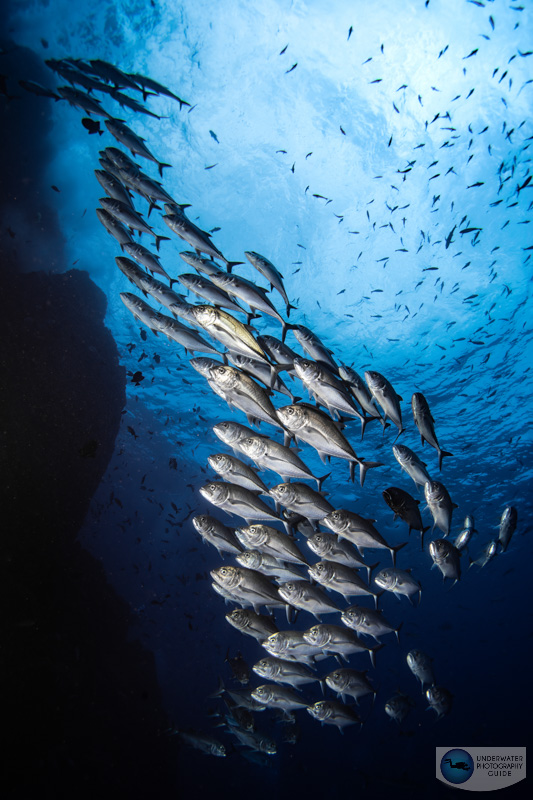
I came home from Socorro very pleased with the performance of the Sony A7 IV. What was most conspicuous for me was the lack of shots that I missed because I didn't really miss any (save user error). The camera was like a well-oiled machine. It has a lightning fast autofocus that almost always acquires the target, the dials were positioned in a way so that I could quickly change my settings, the menu is simple and easy to navigate, and the files are a pleasure to manipulate in post processing. Although I did notice that slight issue with banding, I think few photographers will run into similar lighting conditions and be woefully underexposed on an important shot. You really need clear, blue water on an overcast day to recreate it.
Sony has become a clear winner in the underwater video space. I was almost as impressed with the performance of the Sony A7 IV as I was with the A7S III or A1. I do wish the 4K/60p video wasn't cropped, but I adjusted my shooting style and didn't really notice that I was shooting cropped video. The image quality difference is so subtle, that it looks just as good as any 4K to the vast majority of people that view it. With a wide variety of codecs and picture profile options, the A7 IV gives you endless workflow possibilities when pulling blues out of your video or adjusting details ever so slightly.
What I think is most important is that most people could pick up a Sony A1 and a Sony A7 IV and not notice the difference between the flagship camera and the "budget friendly" equivalent. And that to me speaks volumes. I think the Sony A7 IV is perfectly suited to be the optimal hybrid photo-video camera for most underwater creatives.
Best Lenses for Sony A7 IV
In recent years, Sony has gone from having a limited supply of lenses for underwater photography to one of the best repertoires of native lenses for full-frame mirrorless cameras on the market. Sony A7 IV users have an excellent set of choices for shooting macro, wide, mid-range, and fisheye.
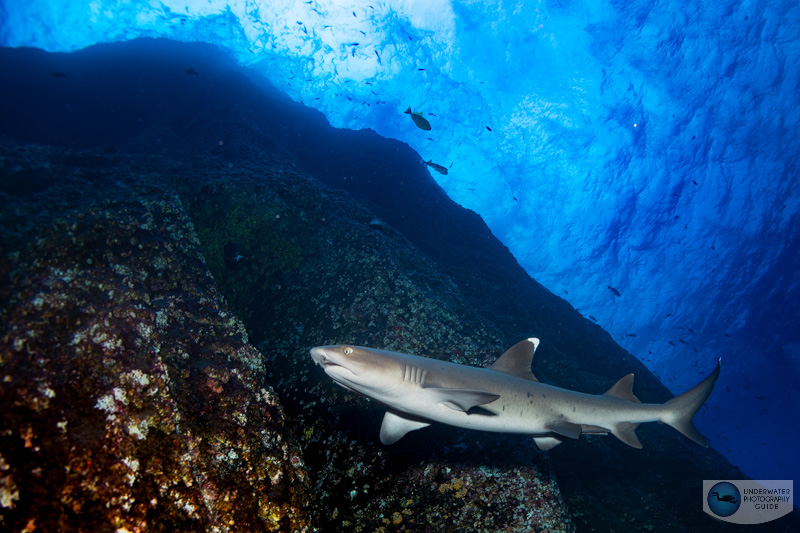
Wide-Angle Lenses
The Sony 16-35mm F4 lens is the top wide-angle lens choice for photo and video. If you’re looking for something even wider to get nice close-focus wide-angle (CFWA) shots of reefs there are a couple of options for shooting fish-eye. The 28mm prime lens with a fisheye conversion lens will give the widest possible angle of view. The fisheye conversion lens can be used behind a large or small dome port, while the Sony 16-35 mm F4 lens is recommended for use with an 8-inch dome or larger.
Wet wide-angle lenses are a great option with this camera. We recommend the Nauticam wet wide-angle lens or the Kraken KRL-01 wet wide-angle lens with the 28mm prime lens. All of these options are very sharp and will result in stunning wide-angle photos.
Or, for the most versatility, the Sony FE 28-60mm F4-F5.6 lens behind a flat port with zoom gears and the Nauticam WWL-1B Wide-Angle Wet lens makes an excellent wide-angle set up. Read more about the Sony 28-60mm F4-F5.6 lens for underwater photography.
Mid-Range Lenses
The Sony 24-70mm F 4 or the Sony 28-70mm F3.5-F5.6 are good choices along with the 35mm F2.8 portrait lens.
Macro Lenses
For underwater photography, the Sony 90mm macro prime lens is the best choice for small fish and macro subjects. It is exceptionally sharp and produces high quality images. A 50mm macro lens is another great option, though it doesn't focus as quickly as the Sony 90mm. Recently, the Sigma 105mm f/2.8 DN DG Art macro lens was reviewed by Bluewater Photo. It looks like it's going be an excellent alternative to the Sony 90mm with potentially better image quality!
We already talked about the Sony FE 28-60mm F4-F5.6 lens and how, paired with the Nauticam WWL-1B Wide-Angle Wet lens, it's a great wide-angle option. Include a Nauticam Compact Macro Converter CMC-2, and you can shoot stunning macro photography too, proving the 28-60mm is one of the most versatile Sony lenses for underwater photography.
Canon Lenses
Canon lenses can be attached to the Sony A7 IV with the Metabones, Sigma MC-11, or Photodiox adapters, but auto-focus is generally better with Sony lenses. Lenses like the Canon 8-15mm, 16-35mm, 17-40mm, and 100mm can work well. I found that the Canon 8-15mm fisheye lens worked better with the Sigma MC-11 adapter than with the metabones adapter.
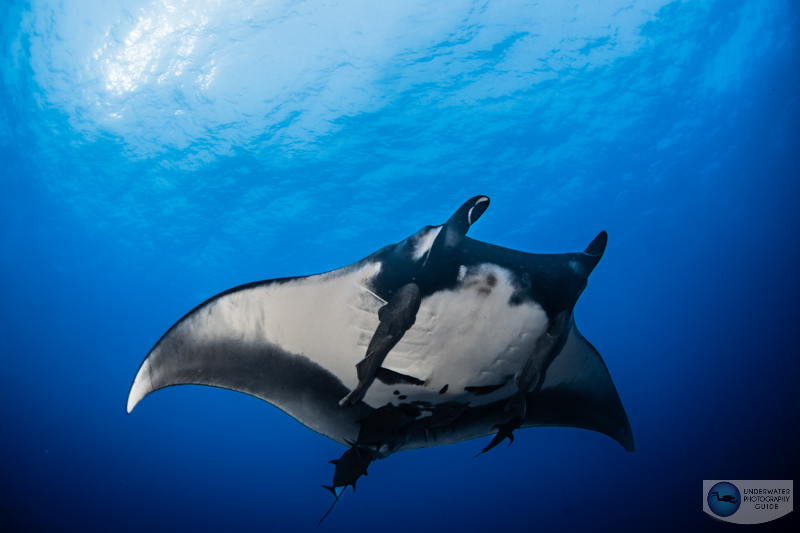
Sony A7 IV Underwater Housings
Marelux Sony A7 IV MX-A7IV Underwater Housing
*Superb Ergonomics, Durable, Innovative Features*
The Marelux Sony A7 IV MX-A7IV Underwater Housing is an excellent aluminum underwater housing that is built to last and can withstand a beating even in the harshest conditions. Marelux housings have incredibly durable anodization to protect them from scratches. It also features a very secure housing & port locking system which ensures the safety of your camera while diving. Camera controls are also readily available at your fingertips.
Order Now at Bluewater Photo!
Nauticam Sony A7 IV Underwater Housing
*Excellent Ergonomics, User-friendly, Durable*
The Nauticam Sony A7 IV Underwater Housing is built from aircraft grade aluminum which makes it durable and lightweight. Camera controls are very easy to access with buttons, levers, and knobs all within easy reach. It also comes with a vacuum valve pre-installed for ultimate peace of mind. Nauticam housings are universally popular and this housing is rated to 100 meters depth.
Order Now at Bluewater Photo!
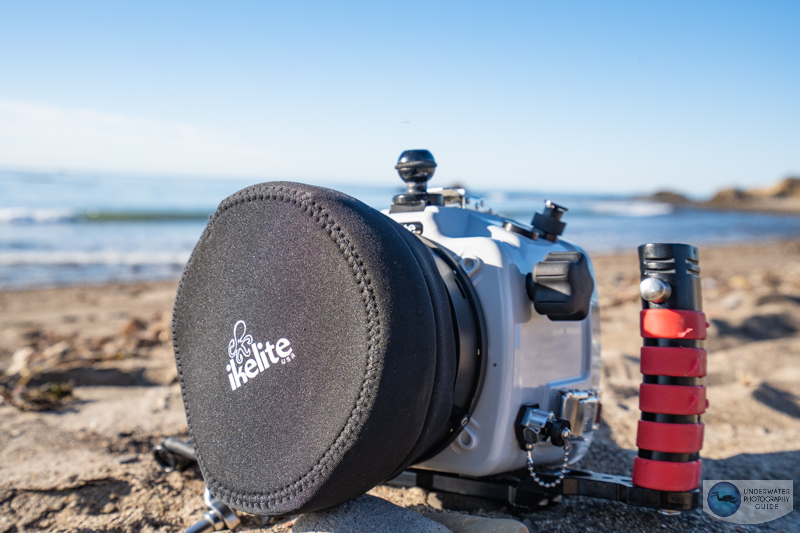
Ikelite Sony A7 IV 200DL Underwater Housing
*Affordable, Sturdy, great TTL option*
The Ikelite Sony A7 IV 200DL Underwater Housing is built from a high quality, corrosion free ABS-PC blend polycarbonate housing which makes it sturdy and impervious to corrosion. The housing offers full control of the camera with controls that are designed to be easy to use. This housing is great for anyone looking for an amazing price point. It's also important not to overlook some Ikelite-specific housing features like the fast and accurate Ikelite to Sony TTL converter or a trim rail system which balances the buoyancy of large dome ports (great for video). The Iklite Sony A7 IV housing features a clear back so you can easily monitor the housing for any leaks. The built-in vacuum system adds an extra level of protection from such events.
Order Now at Bluewater Photo!
Conclusions
After nine days of intensive underwater shooting with the Sony A7 IV, I have to say impressed. In fact, this camera makes me want to sell my Nikon gear and switch to Sony. All of my previous gripes with Sony have been addressed - from the menu system to the color rendition of the files to the autofocus system. The only thing missing is a dedicated Sony fisheye lens. But even then, the autofocus worked surprisingly well with the Canon 8-15mm fisheye and my Sigma MC-11 adapter that I was shooting. When I got home, John from Ikelite called me up and sounded surprised to hear my thoughts on the camera. He doesn't always know me to be a Sony fan. But the truth of the matter is, I like any camera that makes shooting fun, easy, and takes great photos. This camera does just that.
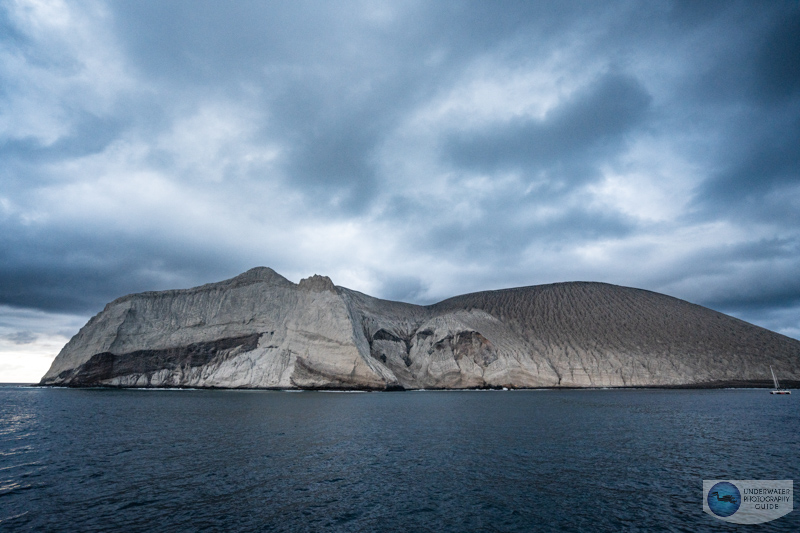
RECOMMENDED ARTICLES
SUPPORT THE UNDERWATER PHOTOGRAPHY GUIDE:
The Best Service & Prices on u/w Photo Gear
 Visit Bluewater Photo & Video for all your underwater photography and video gear. Click, or call the team at (310) 633-5052 for expert advice!
Visit Bluewater Photo & Video for all your underwater photography and video gear. Click, or call the team at (310) 633-5052 for expert advice!
The Best Pricing, Service & Expert Advice to Book your Dive Trips
 Bluewater Travel is your full-service scuba travel agency. Let our expert advisers plan and book your next dive vacation. Run by divers, for divers.
Bluewater Travel is your full-service scuba travel agency. Let our expert advisers plan and book your next dive vacation. Run by divers, for divers.




